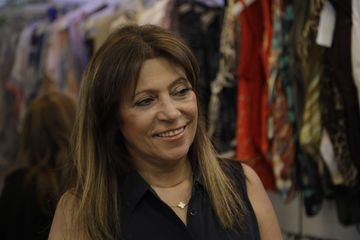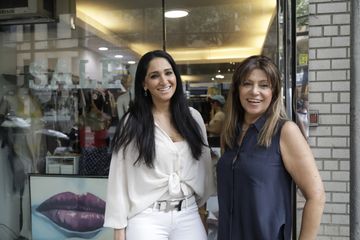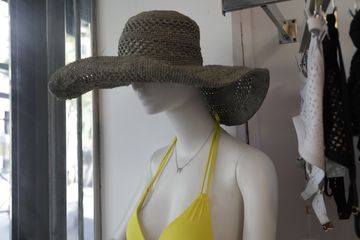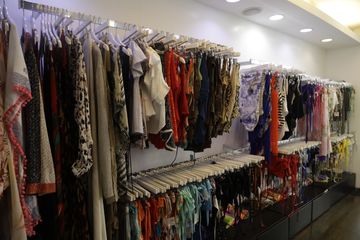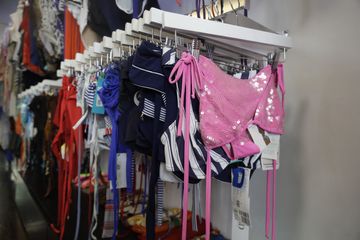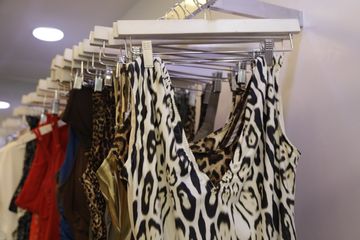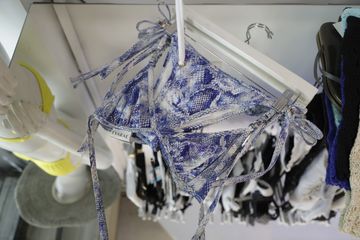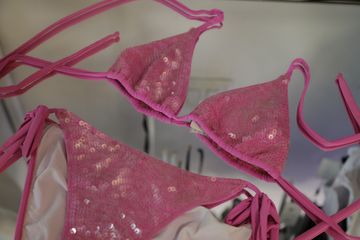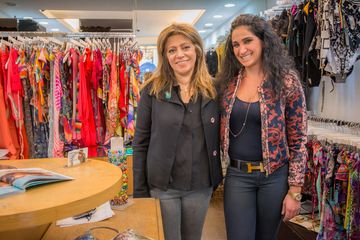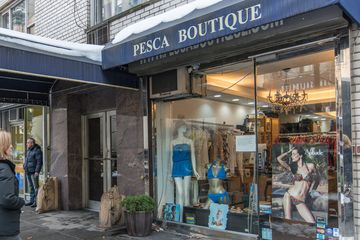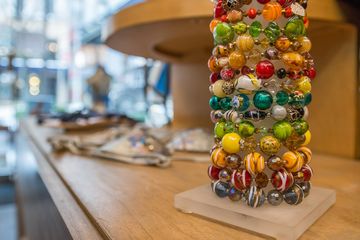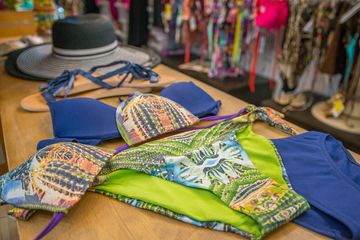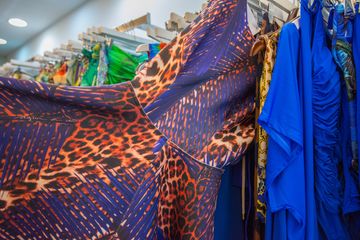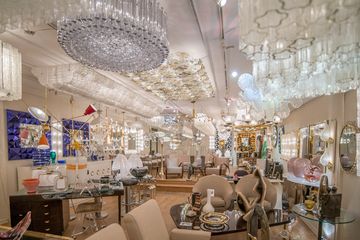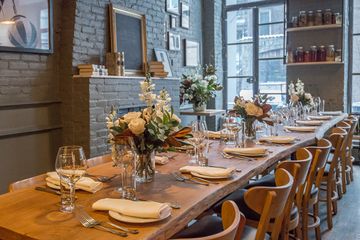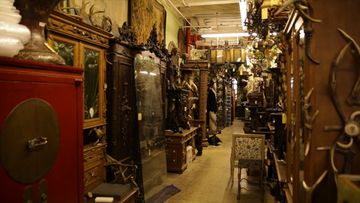
"The Gem of Swimwear" is the tag line for Pesca, and as I discovered quickly, an absolute "hidden gem" on the side streets of Manhattan. Imagine stepping indoors from the gray shades of winter into a petite, yet beautifully filled boutique, where one is greeted by the aquamarines, corals, and creams of the tropics. The contrast was a welcome reprieve, but more important to me, was to discover the rare professional, yet loving relationship between the mother and daughter, Shahlla and Teresa Azizian. Their familial affection for each other is obvious, and seems to only have been strengthened by running a business together. Not only are they the lifeblood of Pesca - the only all-year-round swimsuit boutique in the area - but there is no doubt that both of them could model their wares on any runway.
Shahlla came to the States by way of Iran, and originally opened her boutique in 1979 to sell swimsuits and fur coats. After a few run-ins with theft, however, she decided to focus solely on swimwear. The store services women from age sixteen to seventy, and stocks suits from around the world. Teresa enjoys her frequent travels to France for the swimsuit shows, but mother and daughter sell suits from South America, Israel, the United States, and other parts of Europe. Shahlla admitted to having a particular fondness for Karla Coletto, an American designer, whereas Teresa revealed that she prefers the European and South American fashions.
The secret to the two women's success is their personal touch. "We don't sell to sell," Shahlla said. Their goal is to find the perfect suit for each woman, so that they can gain the trust of regular clients. Both mother and daughter have a magnificent eye, and can pick suits that are perfect for a woman's body type and taste. Their personalized service extends to keeping a record of past purchases, and if a repeat customer orders a swimsuit on-line, they will send two or three more possibilities in the mail for them to try. "Our business is based on trust, the women shared with me, "If the extra swimwear does not work, we know that the client will send it back."
Pesca is not just about the swimsuit. "We pack your suitcase for you," Teresa explained. Amidst the rainbow of swimwear, Pesca sells cover ups, beach dresses, hats, bags, sandals, jewelry, and belts. We provide "the full story." When I asked what their favorite aspect of the business continues to be after so many years, both women commented that with their extensive experience and knowledge in their field, the two are often invited to sit with designers and recommend color combinations, or alterations to a style so that it would best flatter a woman's body.

